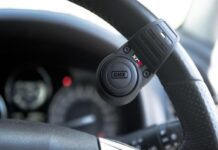This series is presented by Blackwoods.
Modern industrial practices have evolved and changed considerably from their first incarnations due to available technologies and processes.
The discipline of instrumentation is no exception. Instrumentation can be defined as the term referring to measuring instruments used for indicating, measuring and recording physical quantities. While these can refer to simple direct measuring devices such as thermometers, modern instrumentation can be as complex as large as computer-based industrial control systems. This series will explore the integration of digital technologies into instrumentation with a particular focus on Bluetooth® integrated hardware.
Modern Instrumentation and Measurement
Measurement and Instrumentation remain relevant even in modern industrial practices. The various situations where measurements are necessary are as follows;
- In a quality environment to check for consistency and accuracy in the manufacturing process.
- On the workshop floor to initially set up or calibrate a machine, prior to a production run.
- By toolmakers (such as moldmakers) in the process of manufacturing precision tooling.
- In engineering and construction situations to measure component sizes such as rivets and screws.
- In laboratories where accurate measurements are essential to experiments.
The paradigm shifts to industry that have come about with the fourth industrial revolution mean that demands for measurement and instrumentation capabilities have increased. Increasing customization requirements coupled with process optimizations in production means that measurement tolerances have decreased calling for greater precision. The requirement for the speed of the manufacturing process and product development cycles means that it is essential that the measurement speeds should also increase. The increased automation in the industry means that measurement instruments have to be reliable and should not require more manual operation than necessary. Meeting these novel needs requires novel technological solutions and one technology that can be integrated with measurement instrumentation to provide these benefits is the Bluetooth® technology.
Basics of Bluetooth® Technology
Bluetooth® is a wireless technology that allows for the transfer of data via radio waves over short distances. It uses short-range Ultra High Frequency (UHF) in the 2.4 to 2.485 GHz bandwidth and can transmit up to 100m even though most applications transmit in less than 10m 1. Bluetooth® also allows for the creation of a personal area network (PAN) which allows for up to 7 devices to be connected to one master Bluetooth® device. The technology was created and remains managed by the Bluetooth ® Special Interest Group (SIG) which holds the patent for this technology 2. The SIG issues licenses after checking and testing devices from various manufacturers which incorporate Bluetooth® Technology so as to ensure the integrity of Bluetooth® applications.
Inherent value of Bluetooth® Technology
The utility of Bluetooth® Technology can be garnered from its unique properties.
- Wireless
- Cheap
- Inherent Automation
- Compatibility with Devices
- Minimal Interference
- Low Energy Requirement
- Data and Voice communications sharing
- Own PAN
- Easily upgraded/updated
- Universal standard
Integrating Bluetooth® Technology and Instrumentation
Bluetooth® Technology’s functional capabilities can be effectively married to improve measurement and instrumentation processes. There are 3 key propositions to measurement and instrumentation and these are as follows.
- Synchronization
Bluetooth® Protocol-based systems transmit data instantaneously and accurately. This provides a live connection for measurement instruments to storage and analysis. For instance, vernier calipers are used to precisely measure diameters and lengths. Integrating Bluetooth® Technology means that each measurement is immediately transmitted to datasheets. This eliminates potential errors due to transcribing multiple data points at the end of a measurement exercise. - Productivity and Efficiency
Bluetooth® Technology’s ability to instantaneously transmit data also has implications for productivity. Live transmission of data means that measurement processes can be significantly sped up. Measurement data can be transmitted directly to spreadsheets
and devices from Bluetooth® Technology integrated measurement instruments. In some Bluetooth® Technology powered devices, the data can even directly be input into charts, spreadsheets and graphs to ascertain variances immediately. This removes the need to process the raw measurement data and allows users to instantaneously analyse if the measured quantities are within acceptable tolerances. This increases the efficiency of time taken per measurement but also frees up the user to take more measurements over a given time period. As such, productivity also significantly increases. - Safety
The ability to instantaneously transfer data whilst not using wires has tremendous implications for industrial safety. Bluetooth® Technology-based measuring devices also reduces the time spent in dangerous settings and situations for personnel. The data transfer removes the time required to record measurement data in situ so measurement takers only need to measure dimensions with automatic recording of data.

Toledo Series – Bluetooth® Measurement Tools
The Toledo Precision Bluetooth® Range is a premium range of Bluetooth® enabled measurement instruments which endow all of the earlier stated advantages to their users. This series of instruments includes calibers, micrometers and dial indicators
which are able to offer precise and accurate measurements which are taken electronically. The Bluetooth® integration means that the measured data can instantaneously be transmitted to spreadsheets and other devices thus increasing productivity and speed of measurement. For more information about the TOLEDO series of precision Bluetooth® instruments as well as a free demo of these innovative products, visit Blackwoods today.
2 Bluetooth Special Interest Group, Inc. 2019, Bluetooth Market Report 2019, Report, viewed 3rd October 2019, Bluetooth SIG Resource Database 28; https://doi.org/10.3390/jsan7030028
















